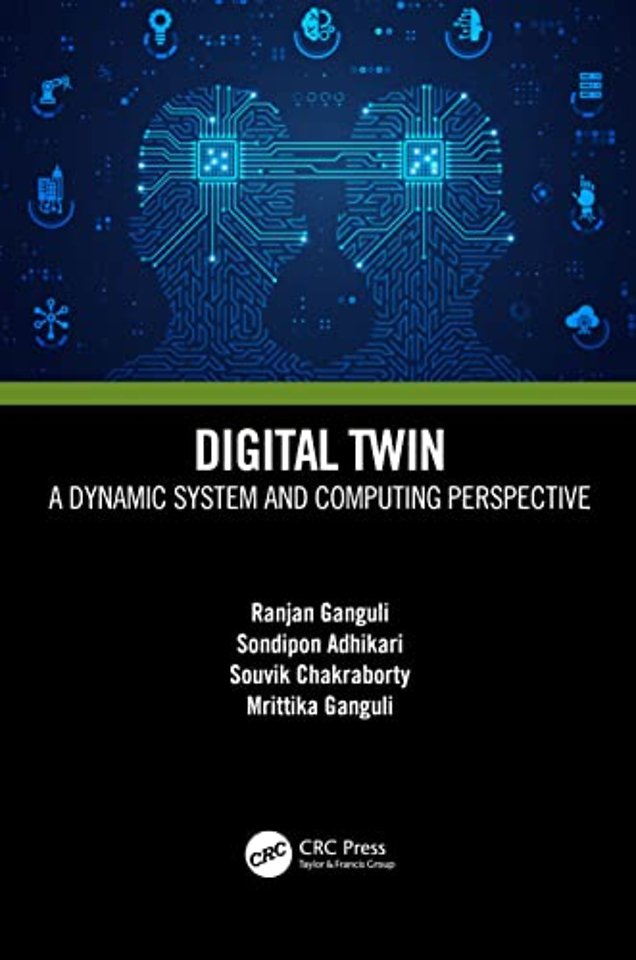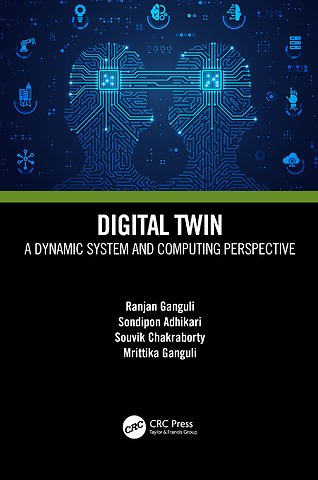Digital Twin
A Dynamic System and Computing Perspective
Gebonden Engels 2023 1e druk 9781032213620Samenvatting
The digital twin of a physical system is an adaptive computer analog which exists in the cloud and adapts to changes in the physical system dynamically. This book introduces the computing, mathematical, and engineering background to understand and develop the concept of the digital twin. It provides background in modeling/simulation, computing technology, sensor/actuators, and so forth, needed to develop the next generation of digital twins. Concepts on cloud computing, big data, IoT, wireless communications, high-performance computing, and blockchain are also discussed.
Features:
- Provides background material needed to understand digital twin technology
- Presents computational facet of digital twin
- Includes physics-based and surrogate model representations
- Addresses the problem of uncertainty in measurements and modeling
- Discusses practical case studies of implementation of digital twins, addressing additive manufacturing, server farms, predictive maintenance, and smart cities
This book is aimed at graduate students and researchers in Electrical, Mechanical, Computer, and Production Engineering.
Specificaties
Lezersrecensies
Inhoudsopgave
1.1 Introduction
1.2 Modeling and Simulation
1.3 Sensors and Actuators
1.4 Signal Processing
1.5 Estimation Algorithms
1.6 Industry 4.0
1.7 Applications
Chapter 2 Computing and Digital Twin
2.1 Digital Twin Use cases and the Internet of things (IOT)
2.2 Edge Computing
2.3 Telecom and 5G
2.4 Cloud
2.5 Big Data
2.6 Google Tensorow
2.7 Blockchain and digital twin
Chapter 3 Dynamic Systems
3.1 Single-degree-of-freedom undamped systems
3.2 Single-degree-of-freedom viscously damped systems
3.3 Multiple-degree-of-freedom undamped systems
3.4 Proportionally damped systems
3.5 Non-proportionally damped systems
3.6 Summary
Chapter 4 Stochastic Analysis
4.1 Probability theory
4.2 Reliability
4.3 Simulation methods in UQ and reliability
4.4 Robustness
Chapter 5 Digital Twin of Dynamic Systems
5.1 Dynamic model of the digital twin
5.2 Digital twin via sti ness evolution
5.3 Digital twin via mass evolution
5.4 Digital twin via mass and sti ness evolution
5.5 Discussions
5.6 Summary
Chapter 6 Machine learning and Surrogate Models
6.1 Analysis of Variance Decomposition
6.2 Polynomial Chaos Expansion
6.3 Support Vector Machines
6.4 Neural Networks
6.5 Gaussian Process
6.6 Hybrid polynomial correlated function expansion
Chapter 7 Surrogate based digital twin of dynamic system
7.1 The dynamic model of the digital twin
7.2 Overview of Gaussian process emulators
7.3 Gaussian process based digital twin
7.4 Discussion
7.5 Summary
Chapter 8 Digital Twin at Multiple Time Scales
8.1 The problem statement
8.2 Digital twin for multi-timescale dynamical systems
8.3 Illustration of the proposed framework
8.4 Summary
Chapter 9 Digital twin of nonlinear MDOF systems
9.1 Physics based nominal model
9.2 Bayesian ltering algorithm
9.3 Supervised machine learning algorithm
9.4 High delity predictive model
9.5 Examples
Anderen die dit boek kochten, kochten ook
Rubrieken
- advisering
- algemeen management
- coaching en trainen
- communicatie en media
- economie
- financieel management
- inkoop en logistiek
- internet en social media
- it-management / ict
- juridisch
- leiderschap
- marketing
- mens en maatschappij
- non-profit
- ondernemen
- organisatiekunde
- personal finance
- personeelsmanagement
- persoonlijke effectiviteit
- projectmanagement
- psychologie
- reclame en verkoop
- strategisch management
- verandermanagement
- werk en loopbaan







